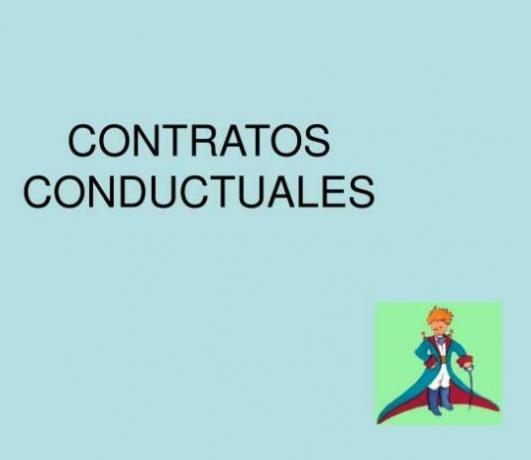
The behavioral contracts they are change procedures behavioralconsisting of written agreements between the psychologist and the person who wants to carry out a change in her behavior in some meaning, or between people who want to produce changes in the behavior of others and those others who want to modify the behaviour.
It can be done individually, although it is more advantageous in groups because it works with generalized stimuli: There is no satiation (advantage)
Main advantage: It allows you to work with a wide range of reinforcers in the long term The first tokens have to be reshaped immediate (to motivate) The token is always accompanied by another natural reinforcer (smile, compliment.) The tokens must have a functional value widespread
Value of behaviors: First we start with a behavior and then we add more little by little
Work only with behaviors that are motivational, as long as punishment can be better avoided, since it is a system that arises to reinforce behaviors that are more Frequently we will give less tokens and with the less frequent tokens more tokens: We must add behaviors that are easy to reinforce and that have a good rate so that the tokens are tools. As the chips are standard, we can clearly know which is the most reinforced and the least.
Support value: What you like least: It costs less chips and what you like the most, more chips but at the beginning you have to incorporate a support value It costs few tokens for there to be motivation. You can put whatever you want as a support enhancer, the best thing is that there are several reinforcers of each "price" It is necessary to vanish the system of tokens, going from continuous and intermittent reinforcement and making the support reinforcers more expensive. It has to be done gradually. Another way would be to delay the moment of changing the chips
They cannot run out of chips, so that they can control themselves and get what is worth the most. Control that it does not always change for the same to avoid satiation. You always have to earn chips: Do not change with Response cost programs. If it is combined with response cost, it must be borne in mind that in the end it has to end with a positive balance: If there are behaviors to reinforce and behaviors to punish, we have to reinforce with more tokens the behaviors to reinforce since they are low frequency and remove less tokens for the behaviors to punish since they are high frequency We can also give at the beginning a number of tokens as if it were a non-refundable loan (Example: the traffic points are out of balance, because you have to wait years behaving well to get points and with little you do you remove).
DESIGN A CHIP ECONOMY
- Review the literature
- Identify the target behaviors
- Record a baseline of target behaviors
- Select support reinforcers
- Select the most appropriate token for the client (attractive, light, easy to carry, durable, easy to handle, difficult to counterfeit)
- Identify available people who can help carry out the program
- Get a suitable venue and equipment
- Decide on specific application procedures
- Prepare a manual for customers and employees
- Kick-start the Token Economy
- Plan strategies to obtain generalization to the natural environment
- Observe and plan relevant ethical guidelines at every step
This article is merely informative, in Psychology-Online we do not have the power to make a diagnosis or recommend a treatment. We invite you to go to a psychologist to treat your particular case.


